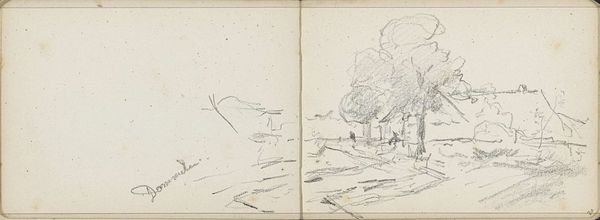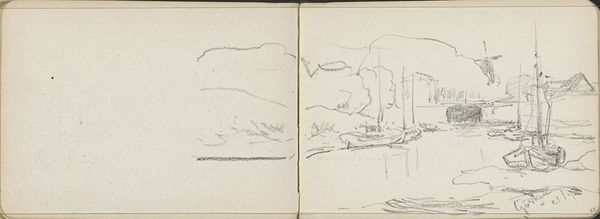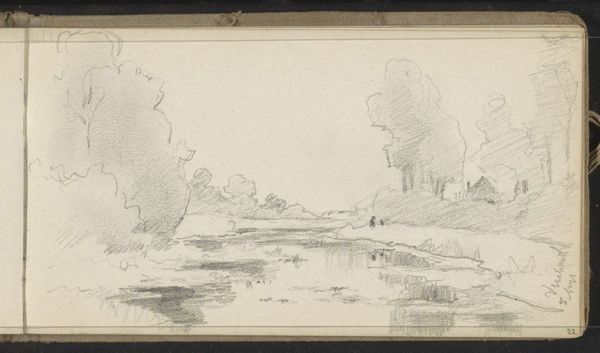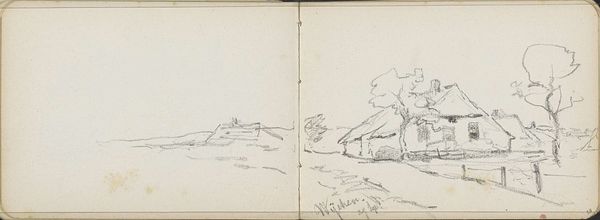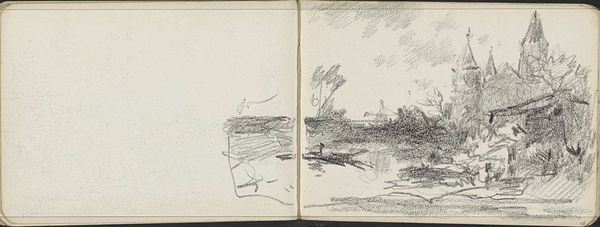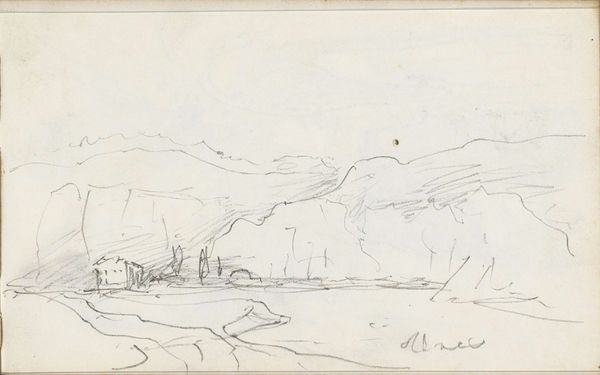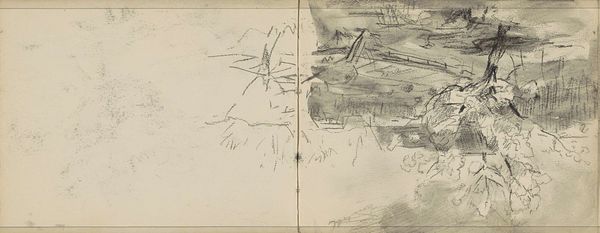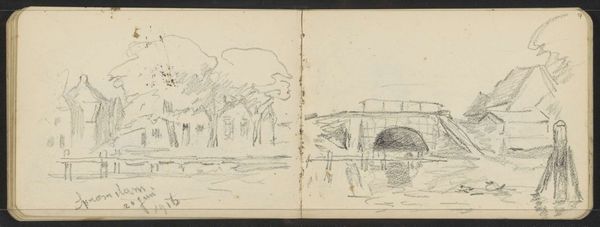
Dimensions: height 115 mm, width 160 mm
Copyright: Rijks Museum: Open Domain
Editor: We're looking at "Zeil- en roeiboten op het water," or "Sail and Rowboats on the Water," a pen and pencil drawing on paper by Willem Cornelis Rip, created sometime between 1914 and 1916. The quick, sketch-like quality gives it a sense of immediacy. What can you tell us about it? Curator: Looking at this work through a materialist lens, the rough and immediate nature of the sketch is revealing. The choice of simple materials – pen and pencil on paper – speaks to accessibility and the everyday act of observation. Think about the labor involved; these sketches were likely made on location, reflecting a direct relationship between the artist and their environment. What do you think the accessibility of materials tells us about the intended audience, if any? Editor: Perhaps it was meant for personal reflection, as a study rather than a finished piece for sale? The sketch book style points toward it being preliminary. Curator: Precisely! And considering the period, early 20th century, we see increasing industrialization and urbanization. The artwork then provides some valuable insight on materiality as well as consumption through the labor of the artist as this type of labor becomes a counterpoint or refuge from modern society. How does that influence our understanding of what's depicted? Editor: That's fascinating. I guess it positions these simple boats and quiet waters as a sort of escape from that industrialized world. I hadn't considered the material implications like that before! Curator: It shifts the focus. The means of production – the artist's hand, the humble materials – become central to understanding the artwork's value and its cultural meaning. A reminder that art is work and reflection and those are powerful tools against commodification. Editor: Definitely given me a new way to appreciate sketches, not just for the final image, but the entire process and what it represents socially. Curator: Indeed. Looking at art this way really puts everything in a richer and much more interesting perspective.
Comments
No comments
Be the first to comment and join the conversation on the ultimate creative platform.
